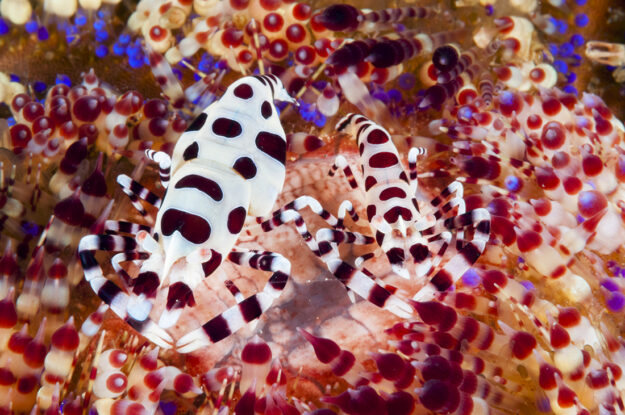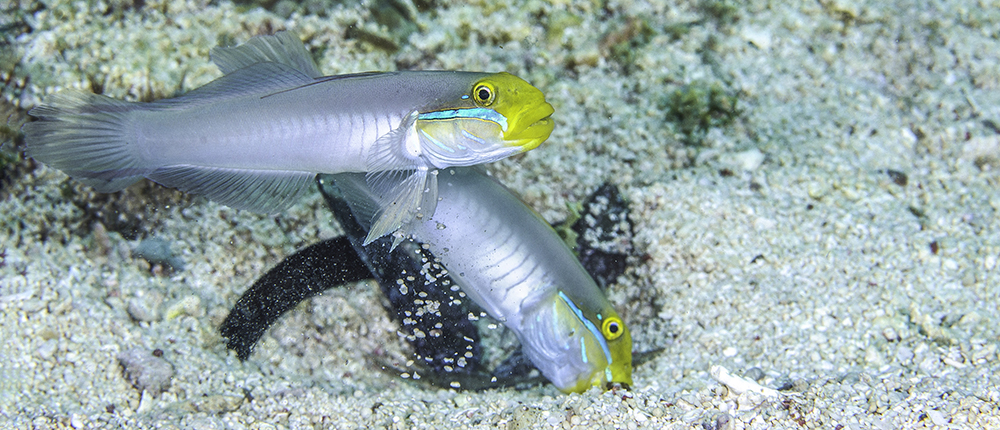Sand Dwellers of Wakatobi

Starfish, like this one on our house reef, are iconic creatures with the most rudimentary central nervous systems and eyespots that can only detect the difference between light and dark. Photo by Glen Cowans
Yet despite their seeming simplicity, starfish are well-adapted to their environment, as they have been around for almost 500 million years, and can live for up to 30 years. Starfish are members of a group known as echinoderms. They move about on hundreds of tentacle-like structures called tube feet, which are also used to capture and hold food. Most move at a pace that is almost too slow to detect, but some species can zip along at speeds of up to an inch a second.

Starfish often have hitchhikers aboard such as this blue starfish shrimp, which takes on the same color as its host. Photo by Walt Stearns
For divers and underwater photographers, the most interesting aspects of starfish, urchins, and sea cucumbers aren’t the animals themselves, but the tiny hitchhikers that can often be found riding along. These passengers include commensal crabs, small shrimp, and even the occasional nudibranch.

A diverse collection of hitchhikers can be found on urchin spines, like these Coleman shrimp spotted on a dive at Pasar Wajo Bay during a Pelagian cruise. Photo by Walt Stearns
To escape notice, a number of these small creatures take on the coloration of their host. For example, in Wakatobi waters, there is a particular species of blue shrimp that can be found on blue starfish. The most diverse menageries of hitchhikers are usually found on urchins, seeking shelter among the spines.
Though not as glamorous as some of the reef dwellers you will find at Wakatobi, the creatures of the sand can be quite interesting to observe and photograph. Devoting some bottom time to discovering this world away from the corals can add yet another dimension to the diving and snorkeling experience.
Thinking about a trip to see sand dwellers and other amazing marine life at Wakatobi? Start by contacting our office at office@wakatobi.com, or complete a quick trip inquiry at wakatobi.com. A Wakatobi team member will be in touch with you to answer any questions and provide information about your next dream dive vacation.
Visit us on Facebook and Instagram.
Watch our videos on YouTube.


